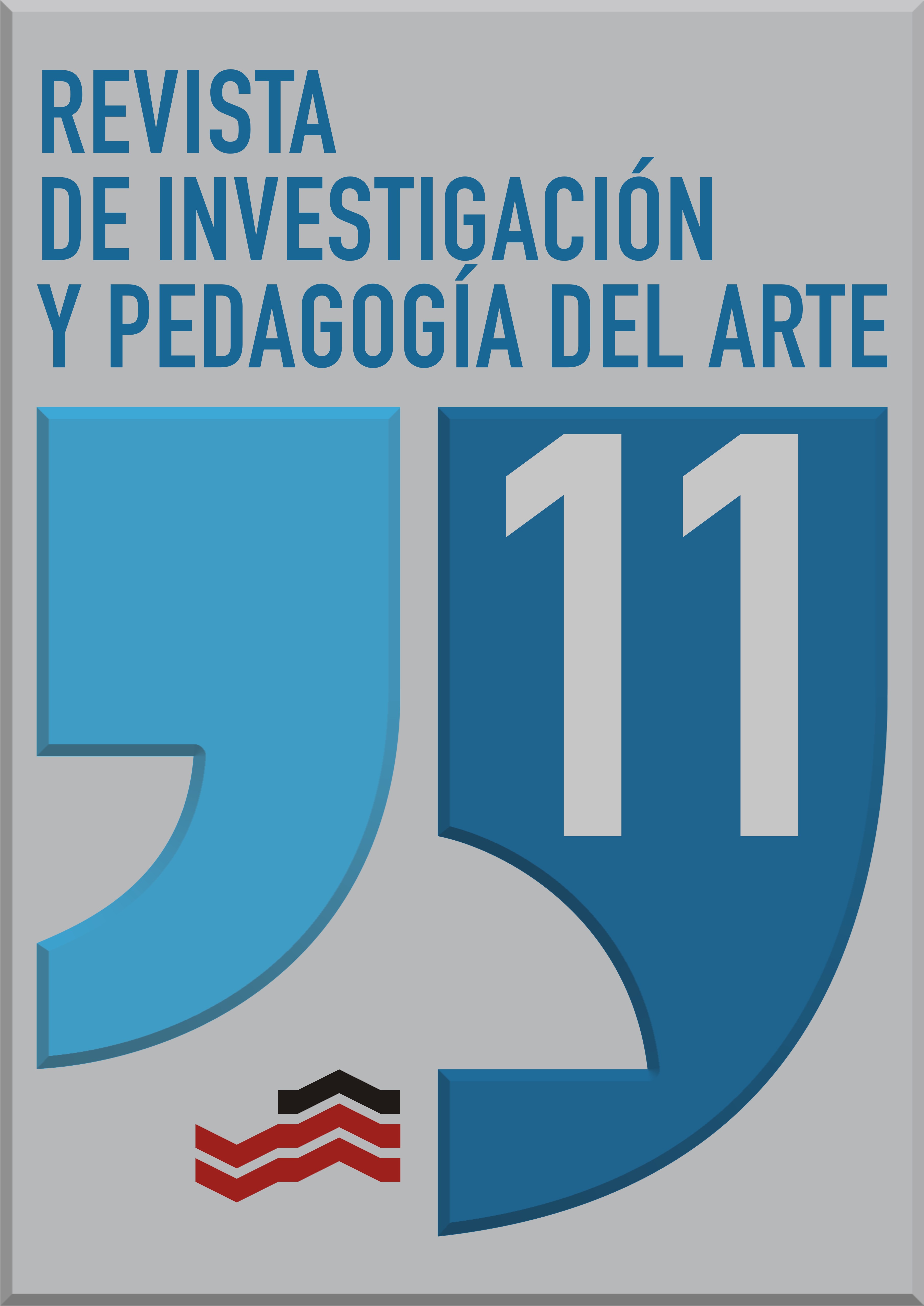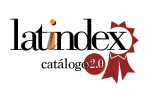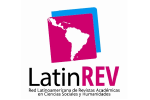Gamification to improve professional camera handling in Photography courses
DOI:
https://doi.org/10.18537/ripa.11.07Keywords:
gamification, photography, professional camera, interactive game, GeniallyAbstract
In the Faculty of Fine Arts, Photography is taught in the first and second year in the different careers. In the first year, students are introduced, among other subjects, to the use of a professional digital camera. During these years, it has been observed that students are not able to adequately retain the handling of the professional digital camera from one year to the next. To this end, an interactive digital game has been designed, accessible from any device, through the Genially platform. The game consists of different challenges that involve the use of the digital camera, taking up the content learned during the course. To check if there is also an improvement in theoretical knowledge, a quick answer test was performed with the Kahoot! application, before and after the game. Students' photographs are also corrected to verify if they have been able to use the camera parameters correctly. Finally, a satisfaction test is given to the class. Good results are obtained in terms of the satisfaction of the students who say that the game has motivated them and that they have had fun as well as learning.
Downloads
References
Al-Emran, M., Elsherif, H. M., & Shaalan, K. (2016). Investigating attitudes towards the use of mobile learning in higher education. Computers in Human behavior, 56, 93-102.
Alonso Vélez, O., Palacio López, S. M., Hernández Fernández, Y. L., Ortiz Rendón, P. A., & Gaviria Martínez, L. F. (2019). Aprendizaje basado en juegos formativos: caso Universidad en Colombia. Revista electrónica de investigación educativa, 21(12), online.
Basantes, A. V., Naranjo, M. E., Gallegos, M. C., & Benítez, N. M. (2017). Mobile Devices in the Learning Process of the Faculty of Education Science and Technology of the Technical University of the North in Ecuador. Formación universitaria, 10(2).
Bonwell, C. C., & James, A. E. (1991). Active Learning; Creating Excitement in the Classroom. ASHE-ERIC HigherEducation Report No. 1. Washington, D.C.: The George Washington University, School of Education and Human Development.
Burke, B. (2012). Gamification 2020: what is the future of gamification? Standford: Gartnet.
Cambridge International. (2019). Aprendizaje Activo. Cambridge: Cambridge Assessment International Education/ UCLES.
Cánovas, G., García de Pablo, A., Oliaga San Atilano, A., & Aboy Ferrer, I. (2014). Menores de edad y conectividad móvil en España: Tablets y Smartphones. Madrid: Centro de Seguridad en Internet para los Menores en España: PROTEGELES, dependiente del Safer Internet Programme de la Comisión Europea.
Carles, J. (18 de 9 de 2019). Inicio a la Fotografía digital, Conoce tu cámara y sácale el máximo partido. (J. Carles, Editor) Obtenido de Joan Carles Fotografía: https://www.joancarlesfotografia.com/manual-de-iniciacion-a-la-fotografia-digital/
Castelo Sardina, L. (2017). Panorama de las enseñanzas de fotografía en la facultad de Bellas Artes de Madrid. UCM. 1979-2017. Congreso internacional de Fotografía (págs. 510-520). Valencia: Universitat Politècnica de València.
Castro, S. (2008). Juegos, Simulaciones y Simulación-Juego y los entornos multimediales en educación ¿mito o potencialidad? Revista de Investigación, 32(65).
Chen, B., & deNoyelles, A. (2013). Exploring Students' Mobile Learning Practices in Higher Education. Educause Review, 7(1), 36-43.
Contreras, R. S. (2016). Gamificación en aulas universitarias. Baarcelona: Institut de la Comunicació (InCom-UAB) Universitat Autònoma de Barcelona.
Deterding, S., Dixon, D., Khaled, R., & Nacke, L. (2011). From game design elements to gamefulness: defining gamification. 15th International Academic MindTrek Conference: Envisioning Future Media Environments (págs. 9-15). Tampere, Finland: ACM.
ditrendia. (2019). Informe ditrendia: Mobile en España y en el mundo. Madrid: ditrendia.
Durall, E., Gros, B., Maina, M., Johnson, L., & Adams, S. (2012). Perspectivas tecnológicas: educación superior en Iberoamérica 2012-2017. Austin, Texas: The New Media Consortium.
Ferrer-Bonsoms Cruz, C. (9 de 1 de 2021). Así funciona Photopea, la mejor alternativa gratuita a Photoshop para editar tus fotos online. Obtenido de Business Insider: https://www.businessinsider.es/como-funciona-photopea-alternativa-gratuita-photoshop-774485
Gaete-Quezada, R. A. (2011). El juego de roles como estrategia de evaluación de aprendizajes universitarios. Educación y educadores, 14(2), 289-307.
Gallego, F. J., Molina, R., & Llorens, F. (2014). Gamificar una propuesta docente, Diseñando experiencias positivas de aprendizaje. XX jornadas sobre la docencia universitaria de la informática (págs. 1-2). Oviedo: JENUI.
Gamification as Learning Scenario in Programming Course of Higher Education. (2018). International Conference on Learning and Collaboration Technologies (págs. 200-210). Springer, Cham.
Gikas, J., & Grant, M. M. (2013). Mobile computing devices in higher education: Student perspectives on learning with cellphones, smartphones & social media. The internet and Higher Education, 19, 18-26.
Gómez-Álvarez, M. C., Echeverri, J. A., & González-Palacio, L. (2017). Estrategia de evaluación basada en juegos: Caso Ingeniería de Sistemas Universidad de Medellín. Ingeniare. Revista chilena de ingeniería, 25(4), 633-642.
Hedgecoe, J. (1996). Nueva fotografía básica. London: Cúpula.
Hedgecoe, J. (2009). Nuevo manual de fotografía. London: Dorling Kindersley.
Horizon. (2017). Horizon Report: 2017 Higher Education Edition. Austin: The new Media Consortium. Obtenido de https://library.educause.edu/-/media/files/library/2017/2/2017horizonreporthe.pdf
Johnson, L., Adams Becker, S., Estrada, V., Freeman, A., Kampylis, P., Vuorikari, R., & Punie, Y. (2014). NMC Horizon Report Europe: 2014 Schools Edition. Austin, Texas: The New Media Consortium.
Kahoot! (06 de 02 de 2021). ¡Kahoot! para escuelas: Evaluación. Obtenido de https://kahoot.com/schools/assessment/
Kapp, K. M. (2012). The gamification of learning and instruction: game-based methods and strategies for training and education. San Francisco: John Wiley & Sons.
Keyser, M. W. (2000). Active Learning and Cooperative Learning: Understanding the Difference and Using Both Styles Effectively. Research Strategies, 17(1), 35-40.
Langford, J. (1990). La fotografía paso a paso. Londres: Hermann Blume ediciones.
Laskowski, M., & Badurowicz, M. (2014). Gamification in higher education: a case study. Make Learn International Conference. 25, págs. 971-975. Portoroz, Slovenia: Make Learn.
Lee, J. J., & Hammer, J. (2011). Gamification in Education: What, How, Why Bother? Academic exchange quarterly, 15(2), 146.
Lovell, R., Zwahlen, F., & Folts, J. (1998). Manual completo de fotografía. Celeste Ediciones.
Mellado Martinez, J. M. (2017). Los fundamentos de la fotografía. Badalona: Anaya.
Mercé, P. (2011). Fotografía digital aplicada a la restauración. En M. d. cultura, La ciencia y el arte III, Ciencias experimentales y conservación del patrimonio (págs. 59-71). Madrid: MInisterio de cultura.
Naciri, A., Baba, M. A., Achbani, A., & Kharbach, A. (2020). Mobile learning in Higher education: Unavoidable alternative during COVID-19. Aquademia, 4(1), 1-2.
Nunes de Almeida, P. (2002). Educación lúdica: técnicas y juegos pedagógicos. Bogotá: Sociedad de San Pablo.
Nuthall, G. (2007). The Hidden Lives of Learners. Wellington, Nueva Zelanda: NZCER Press.
Peñalva, S., Aguaded, I., & Torres-Toukoumidis, Á. (2019). La gamificación en la universidad española. Una perspectiva educomunicativa. Revista Mediterránea de Comunicación, 10(1), 245-256.
Rajšp, A., Beranič, T., Heričko, M., & Horng-Jyh, P. W. (2017). Students' Perception of Gamification in Higher Education Courses. Central European Conference on Information and Intelligent Systems (págs. 69-75). Faculty of Organization and Informatics Varazdin.
Sánchez Ambriz, M. L. (2012). Uso del dispositivo móvil como recurso digital. Didáctica, innovación y multimedia, 1-10.
Sánchez-Vigil, J. M., Marcos-Recio, J. C., & Olivera-Zaldua, M. (2014). Tesis doctorales sobre fotografía en la universidad española. Análisis de la producción y dirección (1976-2012). Revista Española de Documentación Científica, 37(1), 1-14.
xataka. (17 de 04 de 2021). xataka. Obtenido de Genially, la startup cordobesa que aspira a ser la alternativa a PowerPoint con sus contenidos interactivos: https://www.xataka.com/empresas-y-economia/genially-startup-cordobesa-que-aspira-a-ser-alternativa-a-powerpoint-sus-contenidos-interactivos
Published
Issue
Section
License

This work is licensed under a Creative Commons Attribution-NonCommercial-ShareAlike 4.0 International License.










